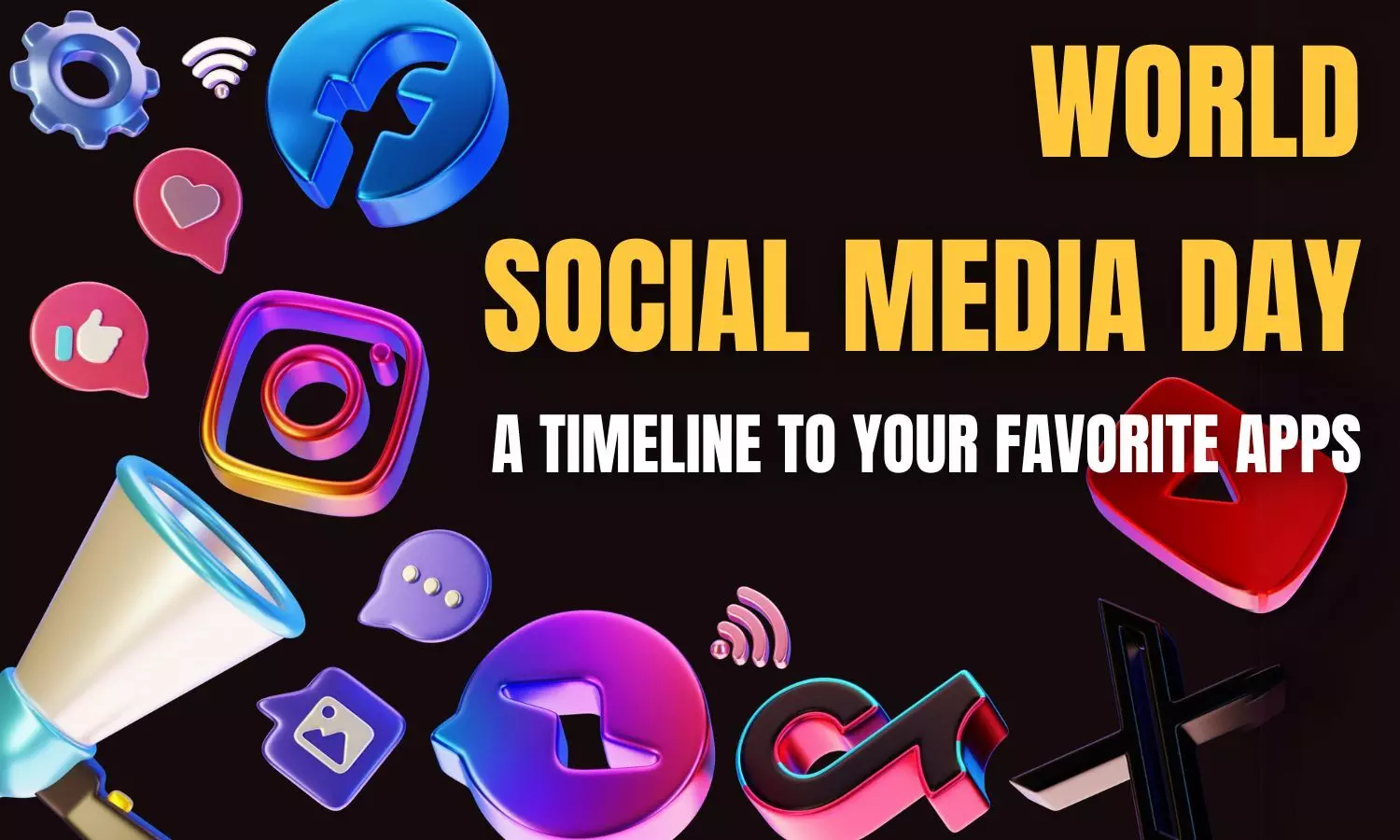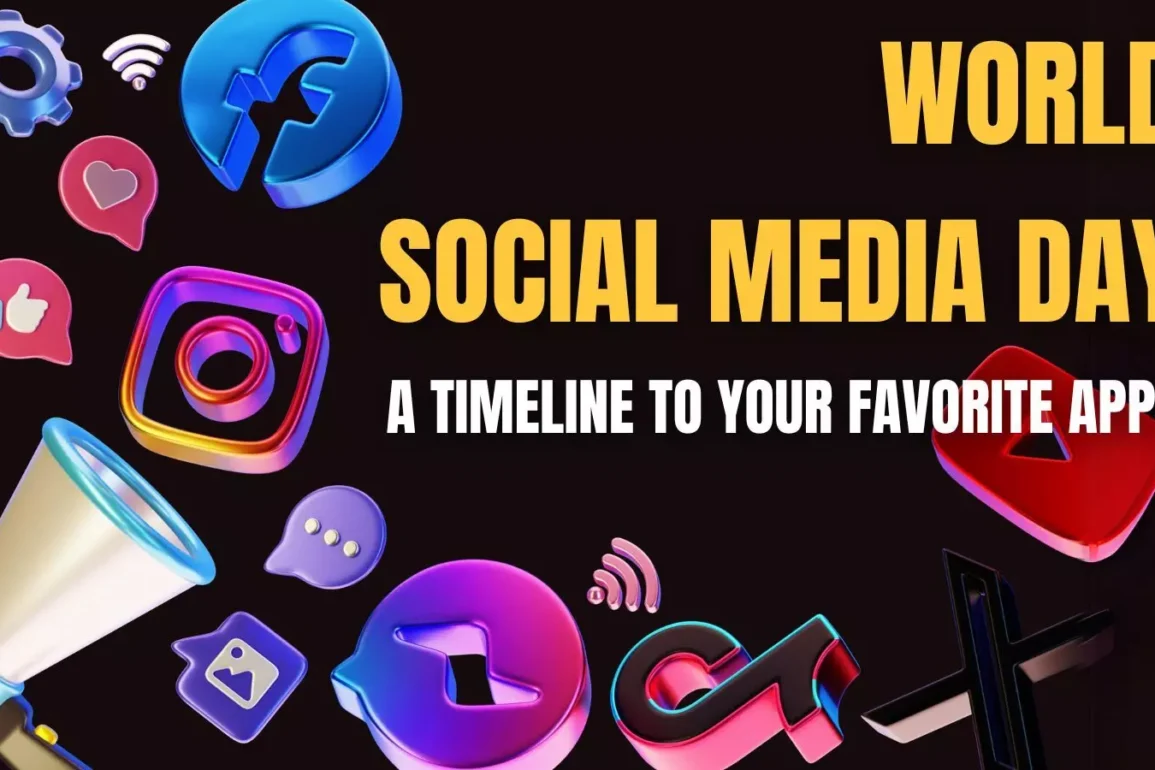
Since starting in 1996, social media has reached more than half of the world’s 8.06 billion people. Over the last decade, social media platforms have nearly tripled their users, growing from 970 million in 2010 to over 4.95 billion by October 2023. Although the rapid yearly increase of new users is slowing, growth continues due to more people gaining internet access and smartphones, especially in developing areas.
So, how big is social media today and how has it changed? This article will provide you with the latest statistics and key information, showcasing the current state and evolution of social media.
The Early Days – 1998 to 2003
Social networking kicked off with the first wave of online communities. In 1998, theGlobe.com went public and made history with the largest first-day IPO gain. This was the dot-com bubble era. SixDegrees.com followed, inspired by the six degrees of separation concept. Users could list friends, family, and acquaintances, sending messages or posting on bulletin boards to people within three degrees of connection. It reached a peak of 3.5 million members.
Then, in 2003, Friendster emerged, letting users connect, share content, and media. It was popular for dating and discovering new interests like music and hobbies but wasn’t quite the real deal yet.
That same year, LinkedIn launched, focusing on professional networking, along with other platforms like Hi5, Myspace, and Skype. These platforms started to shape the social media landscape, but the real game-changer was just around the corner. The first quarter of 2004 set the stage for social media as we know it today. This period laid the groundwork for the massive, interconnected digital world we now live in, marking the transition from niche online communities to a global social media phenomenon.
2004 –The Year Social Media Took Off
On January 22, 2004, Orkut launched, named after its creator, Google employee Orkut Büyükkökten. Users could become fans of their friends and rate them as Trustworthy, Cool, or Sexy on a scale of 1 to 3. Orkut allowed anyone to view profiles unless users were on an ‘ignore list’. By 2008, Orkut was hugely popular in India, becoming the top social network there. By 2014, India was the platform’s second-largest user base, after Brazil.
Just two weeks after Orkut’s debut, a group of Harvard students launched what would become the most influential social media network ever. In American universities, a ‘facebook’ was a printed student directory with photos and basic info. Until 2003, these were only in print. Around this time, Harvard student Mark Zuckerberg told the Harvard Crimson newspaper that he could create an online ‘universal face book’ for Harvard in a week. Zuckerberg and fellow student Eduardo Saverin each invested $1,000, and on February 4, 2004, they launched TheFacebook.
TheFacebook quickly grew beyond Harvard, eventually dropping ‘The’ from its name to become Facebook. This marked the beginning of the social media revolution, transforming how people connect and share online, and setting the stage for the interconnected digital world we live in today.
2004 – 2009 – The Rise of Social Media
In 2005, TheFaceBook.com rebranded to Facebook and expanded beyond Harvard to include other Ivy League universities, eventually opening up to the public. By the end of the decade, Facebook’s user base grew exponentially from 6 million to over 300 million members. The platform introduced its photo sharing feature in 2005, allowing unlimited storage, and unveiled the News Feed in 2006, providing updates on friends’ activities.
Meanwhile, in 2006, Jack Dorsey sent out the first-ever tweet on Twitter, saying, “just setting up my twttr.” Co-founder Dorsey described ‘twitter’ as a term embodying the platform’s concept of sharing brief, casual updates. Twitter quickly evolved into a platform where millions of consequential messages were shared worldwide.
During this period, several other influential platforms launched. YouTube emerged as a hub for video sharing, Flickr for hosting and sharing images, and Tumblr as a micro-blogging site. Sina Weibo, later known simply as Weibo, also debuted, becoming a major social media platform in China.
In November 2009, WhatsApp introduced itself as a chat service exclusively for iOS devices. This innovation would revolutionise global text messaging over the next decade and beyond, demonstrating the transformative power of social media in connecting people globally and reshaping digital communication.
2010-2015 – The Era of Photo and Video Sharing
In October 2010, Instagram launched on the Apple App Store, garnering 25,000 downloads on its first day. Its arrival coincided perfectly with the release of the iPhone 4, renowned for its improved camera. Instagram quickly became the go-to platform for users to share photos.
Earlier in 2010, Pinterest debuted as a platform for sharing images, followed two years later by Snapchat, which introduced the concept of sharing short, 10-second videos.
In 2013, Instagram expanded its capabilities to include video sharing. The same year, Vine, a video-sharing service, was launched and later acquired by Twitter for $30 million. Additionally, the instant messaging app Telegram made its debut.
During this period, there was significant consolidation and new launches in the social media landscape. Microsoft acquired Skype for $8.5 billion, while Facebook made a pivotal move by acquiring Instagram for $1 billion, a decision that proved highly strategic. Google entered the fray with Google+ in 2011 and Hangouts in 2013, aiming to establish its presence in social networking. By 2014, Google shut down Orkut, marking the end of an era for one of its earlier social platforms.
2016 and Beyond – The Evolution of Social Media
In recent years, Big Tech has faced criticism for its impact on mental health and spreading hate, leading to increased scrutiny from governments. Facebook rebranded as Meta, with Instagram growing to 2.4 billion users and Facebook surpassing 3 billion by 2023. TikTok, launched in 2018, has over 1.5 billion users, especially popular with those under 24.
YouTube, which had 200 million users in 2010, reached 2.7 billion by 2023, becoming the second most popular platform after Facebook. Despite new alternatives like Clubhouse, Parler, and TruthSocial, major platforms have consolidated their dominance.
Elon Musk acquired Twitter, renaming it X, while Meta continues to grow, with Instagram and its influencers reshaping marketing. Social media now deeply influences how we consume content, connect with friends, and share news, far exceeding early expectations.








